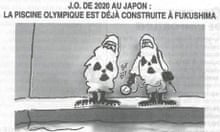Opulent eroticism curves and billows in this bold exhibition of shunga prints made to entertain and arouse Japanese men and women between 1600 and 1900. Fantasy blossoms too: in a sensational picture by Hokusai, two octopuses make love to a fisherman's wife, their tentacles literally everywhere. Her face is ecstatic.
The curator of this delve into art's sensual history at the British Museum insists that pleasure is mutual in shunga. Early modern Japan was no feminist paradise, and the show does stress the harsh realities of the sex industry. But in shunga prints, which were looked at by men and women and treasured by married couples, everyone is having a good time. Lovers bask side by side in kimonos and you have to look a moment to see what they're up to under the brightly coloured folds. Or they twist into spectacular conjunctions that create wondrous patterns of white limbs and backs.
This art is sexy. It's intended to promote what it portrays. But it has very little in common with modern "pornography": it would be absurd to see these pictures as objectifying anyone. Men and women alike are shown with a sensual imagination that is disarmingly loving. There's no violence or cruelty and above all, no sense of sin.

Shunga was the underground art of samurai Japan. While official culture praised Chinese Confucian values of strict morality, authority and hierarchy, shunga prints laugh at all that and turn the official worldview upside down. A travesty of an advice book for women mocks conventional tips to obey your in-laws and advocates sex as the way to a happy marriage. But beyond jokes and titillation, there is in fact an ideal that blazes through these images: peace and concord are born out of sexual bliss.
No wonder this art appealed to westerners like Toulouse-Lautrec and Aubrey Beardsley, one or two of whose shunga-influenced images are here. Its lush lines and fiery colours are truly the door to alternative wisdom.






Comments (…)
Sign in or create your Guardian account to join the discussion